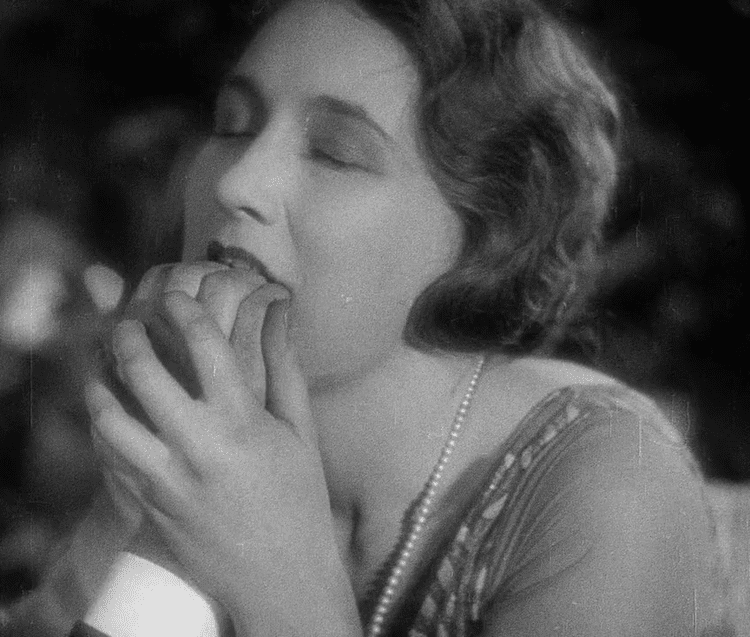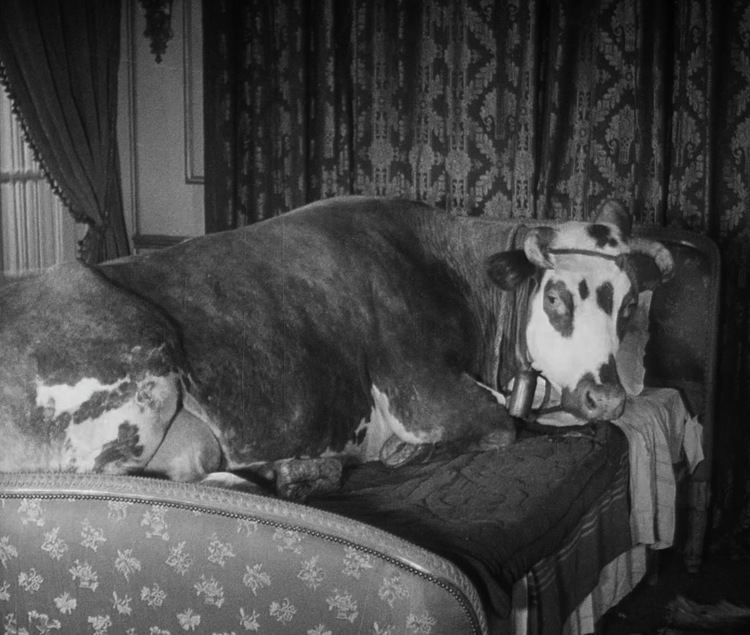8.4 /10 1 Votes8.4
92% Rotten Tomatoes | 7.5/10 IMDb Cinematography Albert Duverger Initial release 28 November 1930 (Paris) | |||||||||||||||||||||||||||||||||
 | ||||||||||||||||||||||||||||||||||
Produced by Vicomte Charles de NoaillesMarie-Laure de Noailles Written by Luis BuñuelSalvador Dalí Starring Gaston ModotLya LysCaridad de LaberdesqueLionel SalemMax ErnstGermaine NoizetJosep Llorens ArtigasDuchangeIbanez Music by Luis BuñuelGeorges van Parys Music director Luis Buñuel, Georges Van Parys Screenplay Luis Buñuel, Salvador Dali Cast Similar Movies about society, Directed by Luis Buñuel, Comedies | ||||||||||||||||||||||||||||||||||
L age d or 1930 720p youtube
L'Age d'Or (French: L'Âge d'Or, [lɑʒ dɔʁ]), commonly translated as The Golden Age or Age of Gold, is a 1930 French surrealist comedy directed by Luis Buñuel about the insanities of modern life, the hypocrisy of the sexual mores of bourgeois society and the value system of the Roman Catholic Church. The screenplay is by Salvador Dalí and Buñuel. L'Age d'Or was one of the first sound films made in France, along with Prix de Beauté and Under the Roofs of Paris.
Contents

Plot

In a series of thematically-linked vignettes, a couple's attempts at fulfilling and consummating their romantic relationship are continually thwarted by the bourgeois values and sexual mores of family, church, and society. In the course of seeking sexual release and satisfaction, involving the man imagining an advertisement has come to life of a woman's hand rubbing herself, then later she tells her mother she hurt her finger, then a waiter at a party rubs a wine bottle in a similar fashion and the woman sublimates her sexual passion by fellating the toe of a religious statue before finally French kissing the conductor of the party's hired orchestra. The man's penchant for committing social taboos, like making love in the mud during a religious ceremony and slapping her mother, seems to excite the woman. He stumbles away from the father and daughter kiss to her bedroom where he throws a burning tree, a bishop, a plow, the bishop's staff, a giraffe statue and handfuls of pillow feathers out the window.

The final vignette is an allusion to the Marquis de Sade's novel 120 Days of Sodom; the intertitle reads: 120 Days of Depraved Acts, about an orgy in a castle, wherein the surviving orgiasts are ready to emerge to the light of mainstream society. From the castle door emerges the bearded and berobed Duc de Blangis (a character from de Sade's novel) who greatly resembles Jesus, the Christ, who comforts a young woman who has run out from the castle, before he takes her back inside. Afterwards, a woman's scream is heard, and only the Duc re-emerges; and he is beardless. The concluding image is a crucifix festooned with the scalps of women; to the accompaniment of jovial music, the scalps sway in the wind.
Cast

Production

L'Age d'Or began as the second artistic collaboration between Luis Buñuel and Salvador Dalí, who had fallen out by the time of the film's production. A neophyte cinéast, Buñuel overcame his ignorance of cinematic production technique by sequentially filming most of the screenplay; the 63-minute movie is composed of almost every meter of film exposed and dramatic sequence photographed.

The production budget was a million francs, and was financed and produced by the Vicomte Charles de Noailles (1891–1981), a nobleman who, beginning in 1928, yearly commissioned a film as a birthday gift to his wife, the Vicomtesse Marie-Laure de Noailles (1902–1970), who was a renowned patroness of the arts and of artists, such as Dalí and Buñuel, Balthus, Jean Cocteau, Man Ray, Francis Poulenc, Jean Hugo, Jean-Michel Frank and others.
L'Age d'Or included actors who were famous artists, such as Max Ernst and Josep Llorens Artigas.
Reception
Upon receiving a cinematic exhibition permit from the Board of Censors, L'Age d'Or had its premiere presentation at Studio 28, Paris, on 29 November 1930. Later, on 3 December 1930, the great popular success of the film provoked attacks by the right-wing Ligue des Patriotes (League of Patriots), whose angry viewers took umbrage at the story told by Buñuel and Dalí. The reactionary French Patriots interrupted the screening by throwing ink at the cinema screen and assaulting viewers who opposed them. They then went to the lobby and destroyed art works by Dalí, Joan Miró, Man Ray, Yves Tanguy, and others. On 10 December 1930, the Prefect of Police of Paris, Jean Chiappe, arranged to have the film banned from further public exhibition after the Board of Censors re-reviewed the film.
A contemporary right-wing Spanish newspaper published a condemnation of the film and of Buñuel and Dalí, which described the content of the film as “...the most repulsive corruption of our age ... the new poison which Judaism, Masonry, and rabid, revolutionary sectarianism want to use in order to corrupt the people”. In response, the de Noailles family withdrew L'Age d'Or from commercial distribution and public exhibition for more than forty years; nonetheless, three years later, in 1933, the film was privately exhibited at the Museum of Modern Art, in New York City. Forty-nine years later, from 1–15 November 1979, the film had its legal U.S. premiere at the Roxie Cinema in San Francisco.
The film critic Robert Short said that the scalp-decorated crucifix and the scenes of socially repressive violence, wherein the love-struck protagonist is manhandled by two men, indicate that the social and psychological repression of the libido and of romantic passion and emotion, by the sexual mores of bourgeois society and by the value system of the Roman Catholic Church, breed violence in the relations among people, and violence by men against women. The opening sequence of the film alludes to that interpretation, by Dalí and Buñuel, with an excerpt from a natural science film about the scorpion, which is a predatory arthropod whose tail is composed of five prismatic articulations that culminate in a stinger with which it injects venom into the prey. Film critic Ado Kyrou said that the five vignettes of the tale of L'Age d'Or correspond to the five sections of the tail of the scorpion.
Legacy
Today, L'Age d'Or is widely regarded as one of the key works of surrealist cinema. British critic Philip French noted that the film, alongside Buñuel's Un Chien Andalou (1929), featured "bizarre sequences that assault bourgeois values and sexual oppression while making no logical sense, and they were acclaimed by the leading arbiters of surrealism as the first authentic surrealist films." In the British Film Institute's 2012 Sight & Sound polls, 15 critics and six directors named L'Age d'Or one of their 10 favorite films in history. Ed Gonzalez of Slant analyzed the film's sound design in relation to his argument that Buñuel's overriding message is the ability of love to "conquer all sorts of moral restraints."
Rotten Tomatoes reports an average rating of 8.8/10 among 25 critics, with 92% approval overall. The aggregation site They Shoot Pictures, Don't They has since found L'Age d'Or to be the 120th most acclaimed film ever made.
